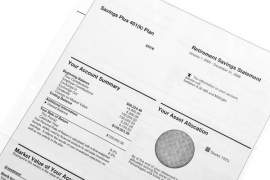
Facts About the Sarbanes Oxley Act

What is the Sarbanes-Oxley Act?
The Sarbanes-Oxley Act was a piece of legislature that was passed in the year 2002; this act was proposed by Maryland Senator Paul Sarbanes and Ohio Senator Michael Oxley as means to provide added protection and security to the United States economy, while enacted more strict investigative and regulatory measures with regard to corporate finance, investing, and the trade – and exchange – taking place on the Commercial Market.
The Sarbanes-Oxley Act, subsequent to its passing, instituted the required fulfillment of a variety of federal stipulations and authorization on the part of any or all publically-traded companies with Market Capitalization values exceeding $75 million. The Sarbanes-Oxley Act is perceived to be a direct response to the ENRON Corporation Scandal uncovered only a year prior to the passing of the Act.
Components of the Sarbanes-Oxley Act
Within the act, a vast array of stipulation, requirements, and classifications exist with regard to their respective – and mandatory – adherence on the part of applicable corporations; the following elements of the Sarbanes-Oxley Act are some of the most common:
Market Capitalization
Market Capitalization, which is the total calculation of a value of an individual company’s stocks and bonds in circulation within the public – or stock – market. The Sarbanes-Oxley Act enacted that every corporation exceeding a $75 million Market capitalization value would be required to adhere to the stipulations and legality expressed within the Bill; in contrast, - ‘Microcaps’ or ‘Penny Stocks’, which are defined as corporations whose respective Market Value does not exceed $50 million – would not be required to adhere to the legislature expressed within the Sarbanes-Oxley Act.
Government Regulation
The Sarbanes-Oxley Act was promoted in order to address the inadequacies that both Senator Sarbanes, as well as Senator Oxley had perceived to be latent within SEC regulations; the SEC – also known as the Securities and Exchange Commission - is the governmental body under whose jurisdiction regulation and investigation of financial activity on the public market exists.
Although the SEC had been imposing audits and investigations with regard to alleged financial fraud, the Sarbanes-Oxley Act expanded on the implicit regulations with regard to financial companies suspected of illegal and unlawful activity.
Financial Fraud
The Sarbanes-Oxley Act not only expanded on the jurisdiction of the SEC, but also elaborated on punitive measures regarding criminal activity taking place with regard to corporations on an internal level – ‘internal’ is considered to represent the following:
The Sarbanes-Oxley Act mandates that any company or corporation suspected of destroying, forging, altering, or concealing official documentation may be subject to supplementary prosecution in addition to any or all preexisting charges.The Sarbanes-Oxley Act allows audits to take place by the SEC with regard to the investigation of any or all financial records in existence within a company or corporation applicable to this Act.
The Sarbanes-Oxley Act authorizes the SEC the permission to investigate and authorize the process, history, and procedure with regard to any or all internal loans, transfer of funds, and movement of assets taking place within the infrastructure of the company.
Whistleblower Clause
Within the Sarbanes-Oxley Act, there exists a clause entitled the ‘Whistleblower Clause’, which draws on the informal title of an individual not employed by an official law enforcement agency, who brings a perceived injustice to light; this clause within the text of the Sarbanes-Oxley Act allows for the protection and accommodation of compliant employees agreeing in the cooperation of SEC-conducted investigations.
NEXT: What Is The Security Act of 1933





















